Discover 11 hidden attractions, cool sights, and unusual things to do in Coesfeld (Germany). Don't miss out on these must-see attractions: Coesfeld Cross, Walkenbrückentor, and Jesuit Church. Also, be sure to include St. Lamberti in your itinerary.
Below, you can find the list of the most amazing places you should visit in Coesfeld (North Rhine-Westphalia).
Table of Contents
Coesfeld Cross
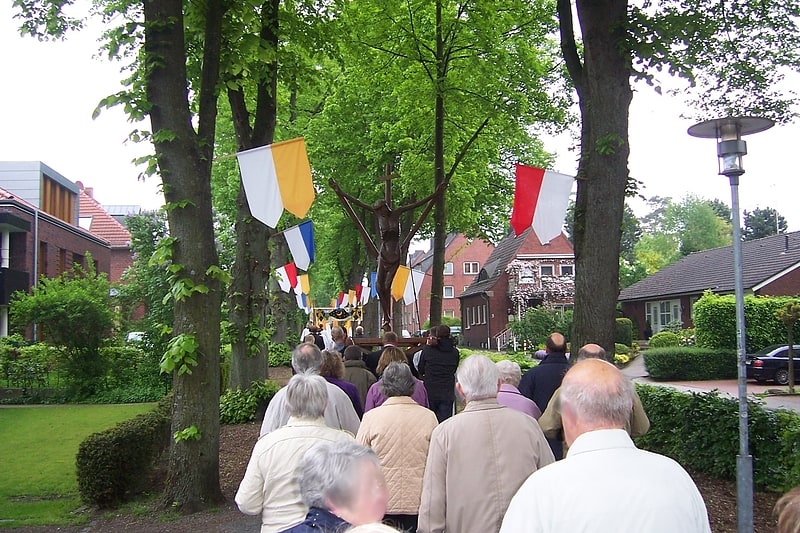
Also known as: Coesfelder Kreuz
Place of worship in Münster, Germany. The Coesfeld Cross is a forked crucifix and is located in the Church of Saint Lambert in Coesfeld.
It is the largest of its type in Germany and is especially noted for its graphically clear portrayal of Christ's suffering. The cross is 3.24 metres high and 1.94 metres wide; the figure of Christ is 2.09 metres tall and has an arm span of 2.09 metres. The torso, which was made in the 14th century, was carved by an unknown artist from walnut wood; from a single trunk of at least 48 centimetres in diameter. The sculptor used oak wood for the arms, and the two beams of the cross. The present smooth surface was originally embellished with wounds and veins made of filler and had a more sculpted appearance as well as being painted. The head appears rather small in proportion today, because it no longer has any of the original hair, which was made of tow and glue. Holes have been bored in the left breast and head in order to attach various relics, including a true cross relic. Hence, from quite early on, the Coesfeld Cross was believed to possess miraculous properties and was the destination of many pilgrimages. A cross is still at the heart of the tradition today. For the various festivals known as Kreuztrachten, streets and houses along the route of the procession are decorated with flags and pennants, not dissimilar to the custom in other Roman Catholic regions.[1]
Walkenbrückentor
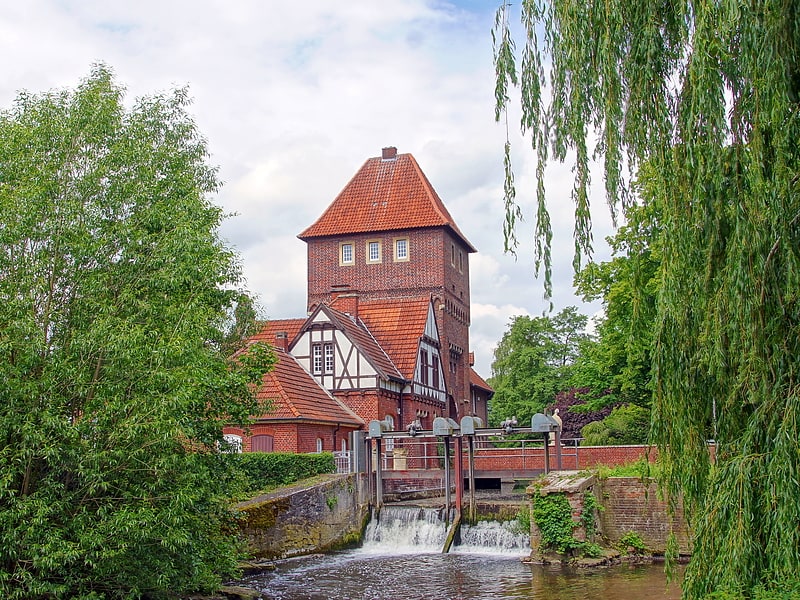
The Walkenbrückentor is the last surviving of formerly six town gates of the former Coesfeld town wall. It is located at the Mühlenplatz directly at the entrance of the Berkel into the city, where at a barrage the floodwater is diverted into the city moat at the promenade.
Address: Mühlenpl. 3, 48653 Coesfeld
Jesuit Church
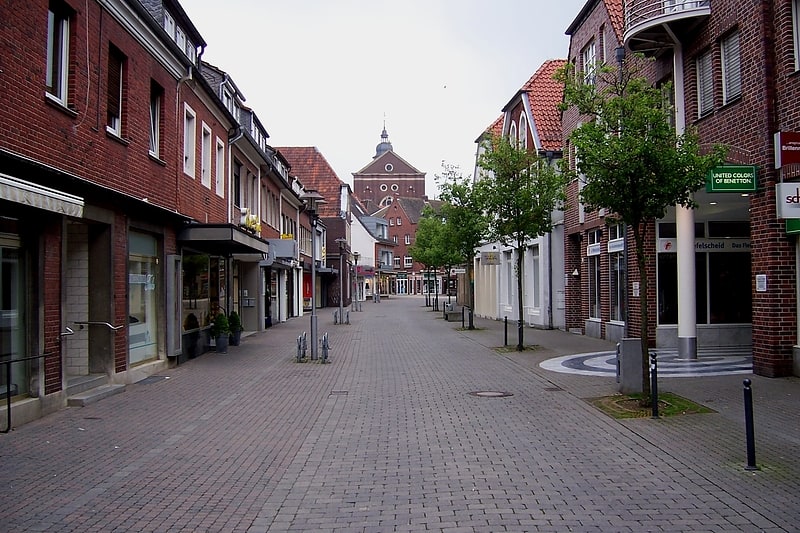
The Jesuit Church of St. Ignatius in Coesfeld was the church of the college and grammar school church of the Jesuit-run Nepomucenum. Later it was a simultaneous church for about one hundred and fifty years and is now the Protestant parish church of Coesfeld.
Address: 24 Kuchenstraße, Coesfeld
St. Lamberti
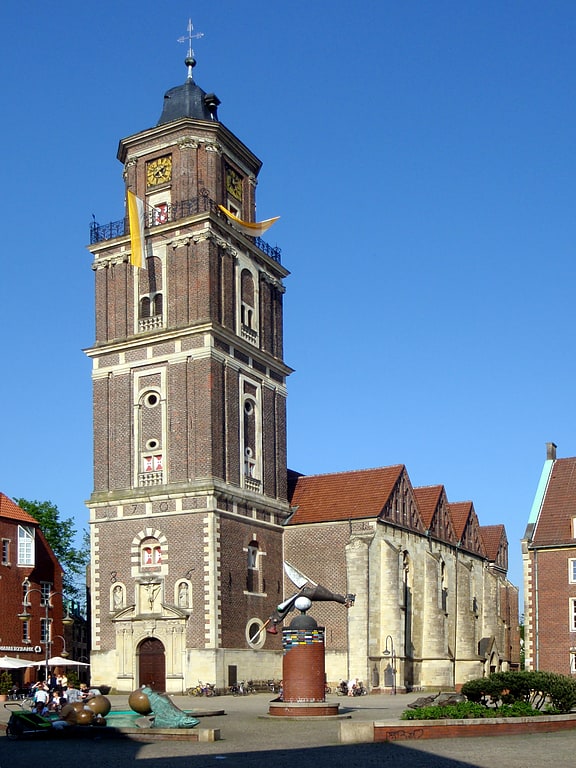
St. Lamberti is the parish church of the Roman Catholic parish of the same name in Coesfeld, Münsterland. It stands directly on the town's market square.
Torhaus der Ludgerusburg
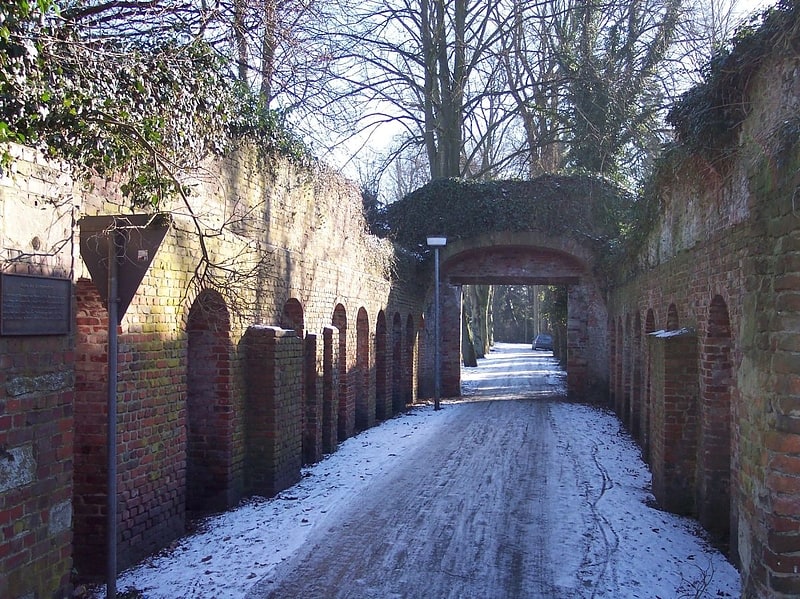
Ludgerusburg is a looped star-shaped citadel in the north of Coesfeld in North Rhine-Westphalia, whose construction and destruction fell in the second half of the 17th century. It was the sovereign residence of Christoph Bernhard von Galen, named after St. Ludgerus, the first bishop of the diocese of Münster.
St. Jakobi Kirche

St. Jakobi is a Catholic former parish church in Coesfeld. It is somewhat younger than the Lambertikirche, from which it was departed in the late 12th century, and to which it has belonged again since late 2007. The former parish area included the southwestern city center, the adjacent city area, and the Bauerschaft Flamschen. St. Jakobi is located on Letter Straße in the south of Coesfeld's old town.
Address: Kellerstraße 1, 48653 Coesfeld
Neuer Jüdischer Friedhof

The Jewish Cemetery Coesfeld is a Jewish cemetery in Coesfeld. The cemetery is located out of town on Osterwicker Straße, near Blomenesch, and is a listed building.
The cemetery was used for burials from 1896. The last burial took place in 1995. There are 47 gravestones (mazewot) preserved on the cemetery grounds. On the central access road, the city of Coesfeld has erected a memorial stele to commemorate the persecution and murder of Jewish citizens of Coesfeld under the National Socialist reign of terror in the Third Reich. Another stele was unveiled in a memorial ceremony on the 70th anniversary of the November pogroms on November 9, 2008, in front of the entrance to the cemetery next to the wrought-iron gate. This was designed by Coesfeld architect Paul Schürmann and features a bronze plaque referring to the cemetery and its history. In the same year, the Heimatverein Coesfeld had all gravestones photographed for documentation purposes in an inventory.
In addition to this "new" one, an older cemetery of the Jewish community existed in Coesfeld on the site of today's Gerichtsring. Today only a gravestone on the green strip between the parking lot of the VR-Bank Westmünsterland and the Gerichtsring reminds of this cemetery. It was occupied from 1678 to 1896. 13 gravestones of the old cemetery were rebuilt on the new cemetery.
Konzert Theater Coesfeld

Concerts and shows, Theater
Address: Osterwicker Str. 31, Coesfeld
Bischofsmühle
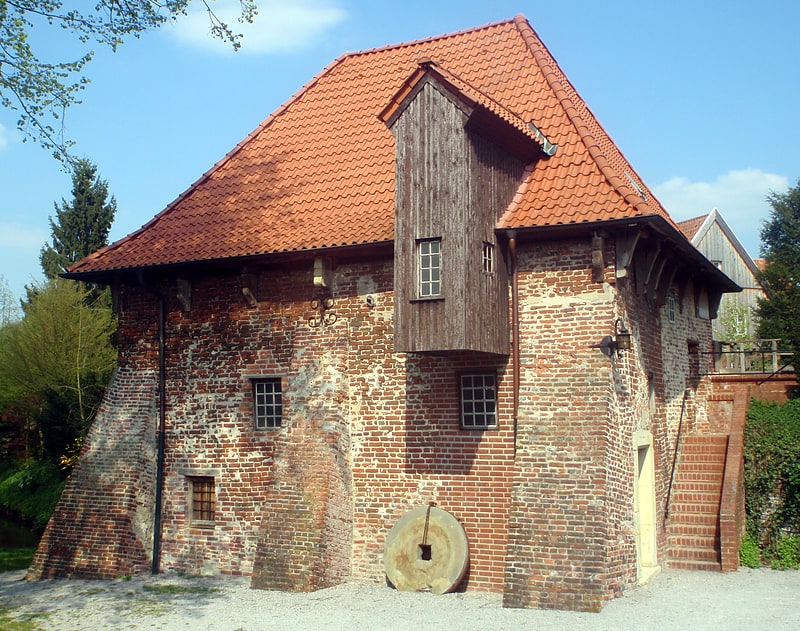
The Bischofsmühle is a watermill in Coesfeld with an upper -ranging water wheel.
Haus Loburg
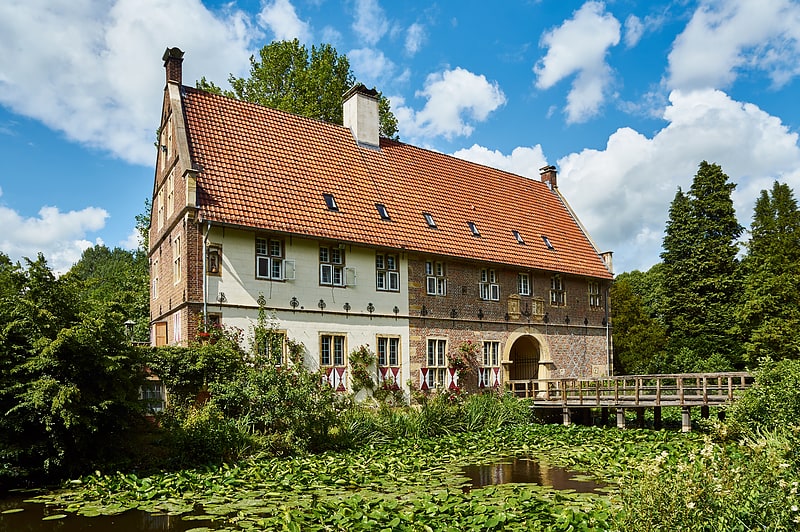
Haus Loburg is a 16th-century manor house in the farming community of Sirksfeld near Coesfeld in North Rhine-Westphalia. It is an old noble seat surrounded by a moat, whose roots are said to go back to the times of Charlemagne. From 1550 to 1560, the estate was built by the Westphalian noble family von Graes and remained in the family for more than three centuries.
It was not until 1912 that Prince Alfred of the noble family Salm-Salm of Anholt Castle bought Loburg House for his son Franz Emanuel Konstantin Prinz zu Salm und Salm-Salm(1876-1965) and his wife Maria Anna von und zu Dalberg (1891-1979), whose descendants still live at Loburg today.
On March 10, 1945, the facility was the target of a bombing raid in which the building, which had been used as an alternative hospital for St. Vincent Hospital since January 1945, was severely hit. A total of 7 people died in the attack, including the children Walter Ricker and Thekla Kösters, as well as 5 patients. Of the Loburg mansion, only the cellar of the completely destroyed west wing remained. The roof of the cellar vault is used as a terrace today. Besides the cellar, the Loburg chapel was the only completely intact part of the manor house after the bombing. Between 1946 and 1949, the gate wing was rebuilt as a two-storey brick building with ashlar integration and a stepped gable in the Renaissance style.
The seemingly still fortified estate is surrounded by agricultural buildings. Today, the Loburg comprises about 80 hectares of fields and meadows used for vegetable and grain cultivation as well as for livestock.
Address: 1 Sirksfeld, Coesfeld
Powder Tower
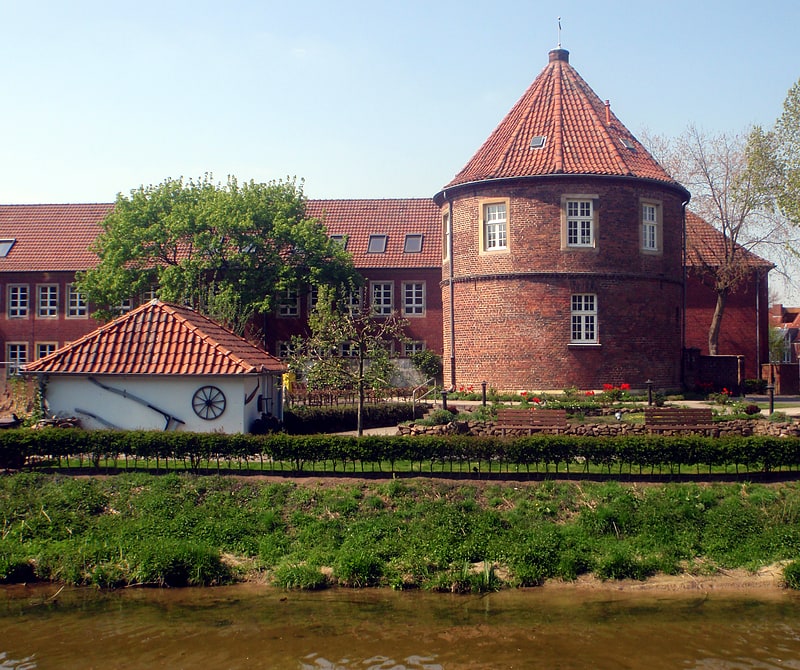
Also known as: Pulverturm
The Powder Tower in Coesfeld dates from the 14th century and goes back to the former fortifications of the town.
Originally, the Powder Tower was built in the form of a three-story fortified tower with a pointed conical roof as part of the city fortifications between the Münstertor and Walkenbrückentor gates. Because of its proximity to the Marienbrink convent of the Coesfeld Augustinian nuns, it was initially named Schwesternturm, Süstern Torn and also Nonnenturm. During the time of witch hunts, bad things happened in this tower. During the Thirty Years' War and the Seven Years' War occupants used this tower. In 1762 it was partially destroyed and fell into ruin. In 1806 Engelbert Vissing acquired land from the monastery, which had been dissolved in 1803, and subsequently rebuilt the tower. For about 100 years it was part of the surroundings of the Vissing leather goods factory. It was acquired by the town of Coesfeld at the beginning of the 20th century and has been called Pulverturm ever since. On March 21, 1945, it was hit during the bombing of Coesfeld and burned out. After the war it was renovated and served as a private residence of a family until 1997. From 2002, the Heimatverein of Coesfeld took over the use and maintenance of the listed building.